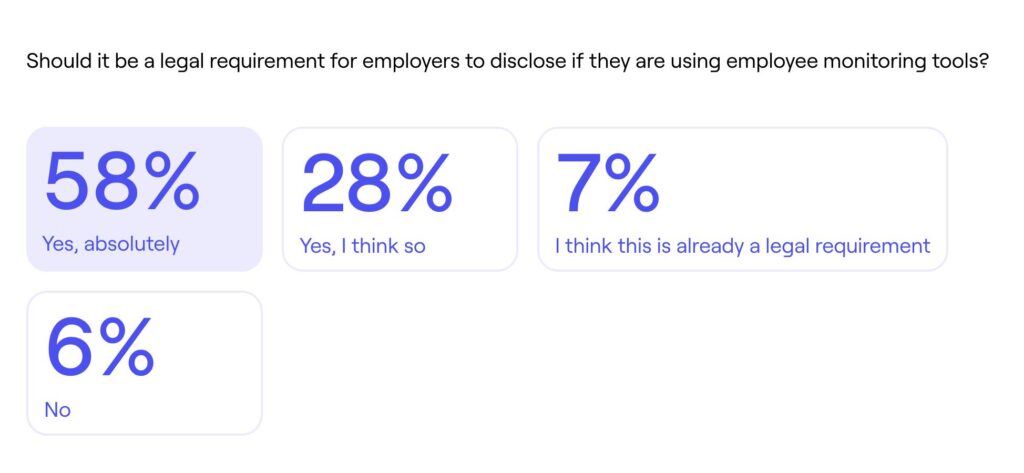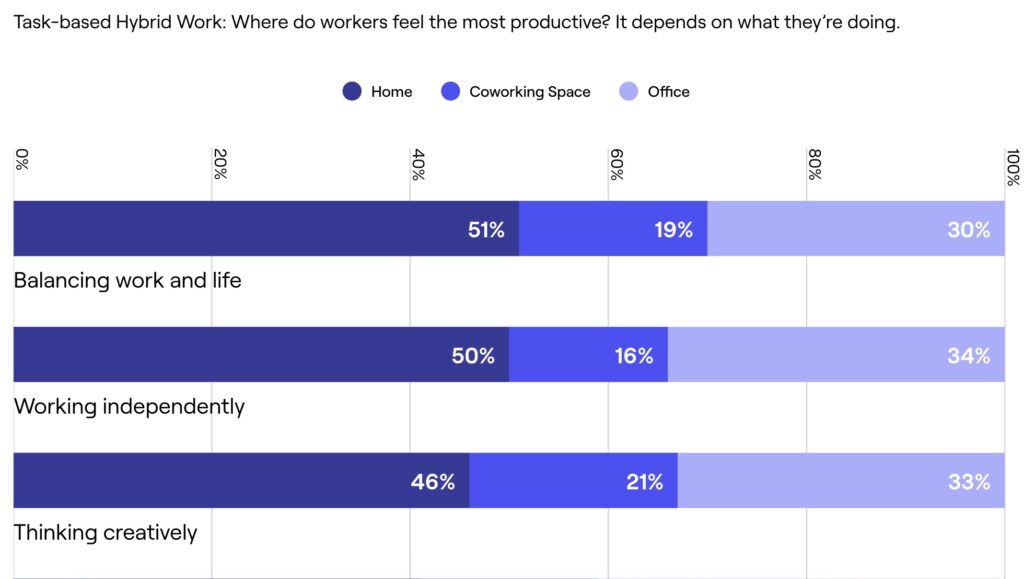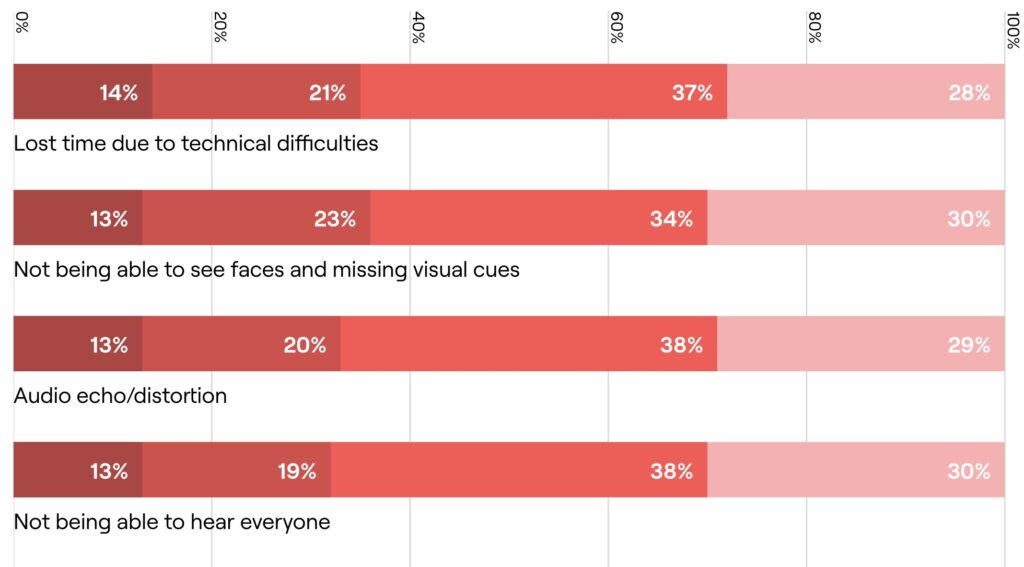Remote team communication is a vital component of collaboration in remote work environments. Without a professional communication culture, things can go wrong. Messages get missed, meetings feel pointless, and people quietly disconnect.
Excellent communication isn’t just about the tools you use. It’s about how people show up, how clear they are, and how often they check-in. That’s why having clear communication guidelines can make a huge difference in how your team works together.
Most importantly, remote team communication isn’t about adding more rules or micromanaging people. It’s about maintaining flexibility, clarity, and consistency in the flow of information in remote teams.
If your team has been struggling to stay in sync or simply wants to work more effectively together, these remote team communication guidelines are worth sticking around for.
Here are some remote team communication strategies you can implement today.
When employees are unclear about goals, deadlines, KPIs, and expectations, it takes a toll on their productivity. Hence, to improve your team’s productivity, it would be best to communicate everything precisely as the team leader or the manager.
You should establish deadlines for each goal and convey to employees what is expected of them. This can be achieved by using multiple modes of internal communication to extend important information to your team members.
For instance, in addition to team meetings on virtual platforms, you should mail the task list and deadlines to each team member individually. This prevents some team members from missing out on vital information during remote meetings.
Planning projects thoroughly and sharing details with the team is also important. You should document everything, optimize email communication, and rely more on written communication than verbal communication.
In this way, you can avert the chances of miscommunications or delayed responses. Clear and transparent communication is the prime prerequisite for high employee engagement.
Also Read:
As the team leader or a project manager, you should work on communication guidelines. After working on framing policies, you should share them with your team. This will help you establish a structured framework of communication.
The central focus of the guidelines will be on the channels of communication. For instance, you can use Google Hangouts for team discussions and information sharing. However, policy decisions and suggestions should be shared via email or Zoom calls. You could also use a shared team mailbox.
Clear instructions regarding the guidelines set by you should be communicated beforehand. It is essential that your team members know about the best channels for different forms of business communications. This will be possible when you create and share norms with your team.
Also, there should be a contingency plan for remote team communication. What if Slack or Google Hangouts is not working on a given day? Communication guidelines should also define alternative channels in unprecedented situations.
Collaboration and coherence will improve when everyone has a uniform set of guidelines to follow. You can refine remote team communication and upscale the results from it. This also helps improve the customer experience, especially for customer-facing teams.
As a business leader, you must identify the best remote team communication technologies to invest in. Using the right tool or software for virtual team communications is paramount to team efficiency. You can reap significant benefits by investing in collaborative software, shared software, and so on.
Technology and artificial intelligence have come a great way. There are state-of-the-art communication tools to suit all sorts of requirements that teams have. If you invest in the right technology, collaboration can be as effective as physical offices.
Also Read:
Investing in the right remote team software can help you coordinate your team’s email campaigns. Plus, it can enable your team members to access shared presentations and documents.
But whatever collaboration processes you choose for your hybrid office, the team needs to know about them. If your team does not know how to make the most of software, remote team communication problems will persist. You need to train everyone working remotely, especially team members reporting to you, on how to use each tool before rolling it out.
Visuals, such as diagrams and infographics, present data in formats that are easy to understand without overwhelming people with huge blocks of text. They have always played an active role in adding more value to communications by focusing only on the most important things.
So, essential remote team communication can be optimized with visuals and diagrams. They will engage your team members better and establish clarity in information sharing.
You can easily share visuals and diagrams with your team using collaborative software. Using infographics and flow charts will make data sharing easier and worthwhile. Remember, the purpose of these diagrams is to simplify communication.
If diagrams and flow charts are too complex, it can have a backlash effect. Keeping it simple and expressive can be pivotal.
You should not constantly mistrust your team members when it comes to remote team communication. You have to show trust in your team members and avoid micromanaging.
A 2024 Owl Labs report revealed that 58% of surveyed workers insisted that employers should disclose if they’re using employee monitoring tools. Failure to disclose this could lead to mistrust and negatively impact remote team communication.

Image via Owl Labs
For instance, uncalled and repetitive follow-up calls from your end can affect their motivation. You should trust their efficiency to grasp information and contact you if they need help. But micromanaging them and trying to supervise every little thing they do can be toxic.
Micromanaging declines the productivity and creativity of employees. Furthermore, it can have a drastic effect on their self-confidence. While implementing effective time management strategies can be beneficial, extreme micromanaging can also lead to high-stress levels in employees.
Instead, it would be best to share regular feedback with them and not micromanage. Help them manage stress and not amplify it.
Once you have explained goals and guidelines, let them do their work independently. Tell them you are available to cater to any doubts they may have. Offer additional support and cooperation to them.
The problem with remote working is that the efforts of team members are not tangible. But it does not mean they are not working if you cannot see them working. Give them their share of flexibility, space, and encouragement to be self-sufficient.
To close, every business now needs a refined remote team communication framework. Managers and business leaders should train remote working teams for effective virtual communication.
This training will, of course, be based on predefined guidelines, identification of communication channels, and the choice of collaborative software.
Also Read:
Remote teams often lack the usual hallway chats and quick desk-side updates, so having fixed meeting times helps establish a steady rhythm.
Setting predictable meeting schedules makes remote team communication smoother, more organized, and less stressful. It eliminates the guesswork of determining when to speak, allowing everyone to come prepared.
When team members know exactly when meetings will take place, they can plan their day accordingly. This is helpful if they’re working from different time zones or balancing other responsibilities.
If you are a manager, a predictable meeting schedule also works in your favor. You can spot patterns, such as who is consistently engaged, who is missing meetings, and how professional responses and information are being shared.
Another way predictive meetings enhance remote team communication is that they reduce meeting fatigue. According to the same Owl Labs report, 58% of surveyed employees block off their calendars to avoid meetings. This is what predictable meeting schedules can prevent.

Image via Owl Labs
Predictive meetings also improve how teams handle accountability. It makes tracking goals, assigning tasks, and following up on pending issues much easier. Over time, this kind of routine makes the team more reliable and focused.
When meetings are scheduled, everyone knows what’s coming and can attend in a way that works best for them.
Also Read:
One of the biggest problems in remote team communication is burnout. If people are stretched too thin or feel like they can’t step away from work, they’re going to tune out or get frustrated more easily.
That frustration shows up in rushed messages, curt replies, or missed meetings. For this reason, implementing a work-life balance is crucial to enhance remote team communication.
Encouraging work-life balance goes a long way in making remote team communication smoother, clearer, and more respectful, and statistics support this.
51% of workers surveyed by Owl Labs admitted to feeling more productive at work where there’s a work-life balance.

Image via Owl Labs
When people feel like they have enough time for both work and personal life, they’re more present during meetings. It makes them more thoughtful in how they communicate and more likely to respond clearly and on time.
The pressure to always be available fades, leading to fewer misunderstandings and a smoother flow of conversation across the team.
A team that has time to rest is likely to have the energy needed to work effectively. Well-rested people think more clearly, remember details more easily, and explain things better when they’re not drained.
Work-life balance also builds trust. It shows that the company respects people’s time, which makes team members more likely to speak up, ask questions, or offer ideas without worrying they’ll be judged for stepping away.
Overall, you’ll see a significant improvement in remote team communication if the people working under you get enough time and rest outside work.
Also Read:
Setting timers for video calls brings structure to remote team communication and helps keep everyone focused on the task at hand.
When there’s a clear time limit, the team knows they need to get to the point. This cuts down on unnecessary chatter, helping to make every minute count. People are more likely to come prepared because they know the clock is ticking.
Timers also help with pacing. Without it, meetings can drag or lose direction. People stay aware of how much time is left and adjust their input accordingly.
This avoids situations where someone talks too long at the beginning, leaving little time for others. Everyone gets a fair shot to contribute, which supports a more balanced flow in remote team communication.
Additionally, timers help manage remote burnout. Video meetings that drag on for too long can drain energy. When people know a meeting won’t go over, they can mentally commit to it without worrying about it cutting into the rest of their day.
Short, timed calls also encourage more follow-up through messages or project tools. Instead of trying to solve every issue live, the team can agree on the next steps and continue the conversation in private channels.
To wrap this up, remote team communication would work best if your team knows in advance how long video calls will take. Therefore, implement timers for video calls to ensure that the promise is kept.
Another strategy for improving remote team communication is to record meetings. It adds clarity and consistency, providing everyone with a reliable way to revisit what was said.
Recording meetings is particularly useful when meetings move quickly or cover multiple topics. Your team members can simply go back and rewatch sections they missed to make sure they catch every detail.
According to Owl Labs, some challenges of remote meetings include technical difficulties, audio issues, and the inability to see what’s being presented. Recording meetings solves these issues.

Image via Owl Labs
Additionally, recording meetings benefits team members who may be unable to attend in person. People may be in different time zones, on leave, or simply preoccupied with other tasks. A recording makes it easy for them to catch up without having to ask others to repeat everything.
Meeting recordings can also serve as a reference point for future decisions. If there’s ever confusion about what was agreed upon, the team can refer to the video instead of going back and forth in the chat.
Another benefit of recording meetings for remote team communication is that it supports different learning and communication styles. Some people process information better when they hear it again.
Others need time to reflect before taking action, and a meeting recording gives them the space to pause, rewind, and take proper notes. This helps them communicate more clearly and confidently with the rest of the team.
You can also use recordings from past meetings as training material for new remote team members during onboarding. This can show them how things are handled and what is expected of them.
Lastly, having a recorded archive gives the team a long-term view of progress. They can look back and see how discussions evolved or how problems were solved over time.
This builds a stronger memory across the team and supports more consistent communication in the future.
Also Read:
Implementing the guidelines we’ve listed above can enhance remote team communication. However, as you reap the benefits, expect to encounter some challenges, and here are some notable ones.
Also Read:
1. What is remote team communication?
Remote team communication is how people working from different locations stay connected and get work done together. It includes everything from emails and chats to video calls and shared documents.
2. How often should remote teams communicate to stay productive?
Remote teams should communicate daily in some form, even if it’s quick check-ins or chat updates. Regular contact helps keep tasks on track and fosters a sense of connection among people.
3. Why is setting clear expectations important in remote communication?
Setting clear expectations helps remote teams understand what needs to be done, who is responsible, and when tasks are due. Without that, people might guess or assume the wrong thing, which slows everyone down.
4. How can remote teams avoid miscommunication during video calls?
To avoid miscommunication during video calls, have a clear agenda and take quick notes as you go. Encourage everyone to speak clearly and ask questions if anything is unclear. Recording meetings can also help people catch what they may have missed during the meeting.
5. What tools help support effective communication in remote teams?
Some of the best tools for remote team communication are Slack, Microsoft Teams, Zoom, Google Meet, and shared platforms like Notion or Google Docs. These tools let teams message, call, share files, and stay organized all in one place.
Also Read:
Effective remote team communication is vital in today’s evolving work landscape. By implementing the golden rules, you can streamline internal processes by eliminating telecommunication bottlenecks.
Encouraging work-life balance and avoiding micromanagement, can go a long way in streamlining remote team communication. Use timetoreply to track response times and improve communication for your remote team.
Get live inbox alerts and reply quickly to customer emails with timetoreply